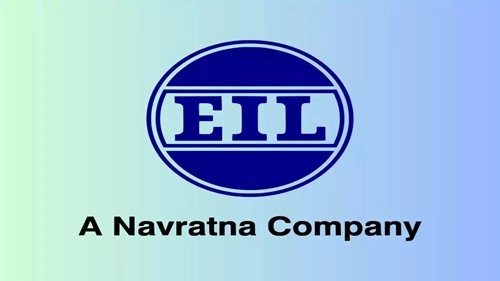The Trident Group, a leading player in the Indian textile and paper industry, has established itself as a prominent global enterprise. With its roots in Barnala, Punjab, the group has grown to become a diversified conglomerate, thriving in various industries such as textiles, paper, chemicals, energy, and more. Trident’s innovative strategies, sustainable practices, and customer-focused approach have allowed it to carve a niche in competitive markets worldwide. Let’s delve into the business model of Trident Group to understand how it earns money and sustains its operations.
Core Business Verticals

Trident operates primarily in two core business areas:
-
Textile Division:
- Home Textiles: Trident is a global leader in home textiles, particularly in the production of terry towels, bed linen, and other related products. With advanced manufacturing facilities and a strong distribution network, the company caters to domestic and international markets. It exports its products to over 100 countries, including key markets in the United States, Europe, and the Middle East.
- Yarn: The group is also one of the largest manufacturers of cotton and blended yarn in India. Its yarn division produces high-quality products used by various industries, including apparel and home furnishing.
-
Paper Division:
- Trident’s paper division is a significant contributor to its revenue. It specializes in producing eco-friendly paper products, including writing and printing paper, copier paper, and specialty paper. Using wheat straw, an agricultural byproduct, as raw material, the company has positioned itself as a pioneer in sustainable papermaking.
Revenue Streams
The Trident Group generates revenue through a mix of direct product sales, exports, and innovative value-added services. Here’s how it earns money:
-
Product Sales:
- The majority of Trident’s income comes from selling its textile and paper products. It has a diversified product portfolio that caters to a broad spectrum of customers, ranging from individual consumers to large businesses.
- In the textile segment, the sales of terry towels, bed linen, and yarn make up a substantial portion of the group’s revenue.
- In the paper segment, Trident earns by selling high-quality copier paper and specialty paper to offices, educational institutions, and industrial clients.
-
Exports:
- Exports form a crucial revenue stream for Trident. The group’s focus on international markets, especially in North America and Europe, has enabled it to become one of India’s top exporters in the textile segment.
- The “Made in India” tag, coupled with its commitment to quality and innovation, has helped Trident maintain strong relationships with global retail giants like Walmart, Macy’s, and JCPenney.
-
Private Label and B2B Partnerships:
- Trident manufactures products under private labels for various international brands. This B2B collaboration allows the company to maintain a steady flow of orders while reducing market risk.
- The group also supplies its yarn and paper products to other businesses, ensuring consistent revenue generation.
-
Sustainability Initiatives:
- Trident’s focus on sustainability not only enhances its brand image but also creates additional revenue opportunities. By leveraging agricultural waste (wheat straw) in papermaking, the company has reduced its dependence on wood-based raw materials, lowering costs and attracting environmentally conscious customers.
- Its sustainable practices also open doors to green funding, subsidies, and collaborations with eco-conscious organizations.
-
Retail and E-Commerce:
- The group has recently ventured into direct-to-consumer (D2C) channels through its own retail stores and e-commerce platforms. By selling products under its brand name, Trident enhances profit margins while building a loyal customer base.
- The rise of online shopping has further boosted its revenue, especially in the post-pandemic era.
-
Energy Production:
- Trident has diversified into renewable energy by setting up captive solar and wind power projects. The energy generated is used to power its manufacturing units, reducing operational costs. Surplus energy is sometimes sold to the grid, adding another revenue stream.
Business Strategies Driving Revenue
Trident’s success stems from its strategic initiatives aimed at innovation, sustainability, and customer satisfaction:
-
Vertical Integration:
- The group controls its value chain, from raw material procurement to finished product delivery. This vertical integration ensures cost efficiency, quality control, and timely delivery.
-
Sustainability:
- By adopting eco-friendly practices, Trident not only reduces costs but also meets the growing demand for sustainable products globally.
-
Technology Adoption:
- Advanced technology and automation in manufacturing allow Trident to maintain high-quality standards while optimizing production costs.
-
Customer-Centric Approach:
- Trident collaborates closely with its customers, offering customized solutions to meet specific requirements. This approach fosters long-term relationships and repeat business.
-
Expansion and Diversification:
- The group continuously expands its product portfolio and enters new markets. For instance, its foray into branded home textiles and paper products has opened up new revenue streams.
Challenges and Opportunities
Despite its success, Trident faces challenges such as fluctuating raw material costs, stiff competition in global markets, and evolving consumer preferences. However, the group has turned these challenges into opportunities by focusing on:
- Innovation: Launching new products with unique features, such as antimicrobial towels and eco-friendly paper.
- Sustainability: Strengthening its leadership in sustainable manufacturing.
- Digital Transformation: Leveraging e-commerce and digital marketing to reach a wider audience.
Financial Performance
In recent years, Trident has showcased consistent growth in revenue and profitability. For FY 2023-24, the group reported significant revenue from both its textile and paper segments, supported by strong demand in domestic and international markets. Its focus on operational efficiency and cost control has further bolstered its bottom line.
Conclusion
Trident Group’s business model is a testament to the power of innovation, sustainability, and customer-centricity. By diversifying its revenue streams, investing in technology, and staying committed to environmental stewardship, the group has positioned itself as a global leader in textiles and paper. With ongoing expansion into retail and renewable energy, Trident continues to explore new opportunities for growth while maintaining its competitive edge in existing markets. Its ability to adapt to changing market dynamics ensures that Trident remains a formidable player in the industries it operates in.

